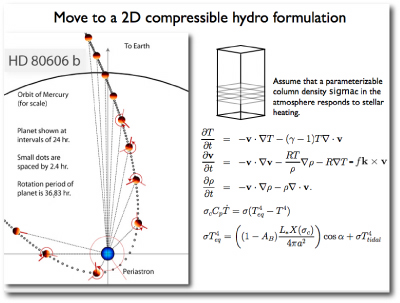
Image Source.
I drove up to Berkeley yesterday to give a talk about my second-favorite planet — HD 80606 b. A good fraction of the keynote slides in the talk were new, and so I wound up spending most of the weekend scrambling to get my story straight and to get the talk together.
Pacing is always tricky the first time that you give a talk on a new topic. You’re supposed to practice your talk before you give it, but It’s hard to get in that recommended hour-long practice session when it’s 2AM the night before, and you’re fading, and there are still four slides to finish making.

Thirty-seven minutes into the talk, it suddenly dawned on me that I’d put together too much material, and so I wound up rifling pretty quickly through the last half of the slides. In an entire career as an academic, I’ve never heard of anyone being unhappy when a talk ended on time rather than going over, so I always wrap things up to come in under the bell no matter what.
Over the weekend, I realized a rather remarkable thing about HD 80606b:
Because of the highly eccentric orbit, there’s quite a bit of tidal energy being deposited inside the planet. This tidal energy source, in fact, likely exceeds the amount of energy that the planet absorbs in the form of radiation from the star. For a tidal quality factor, or Q-value of 300,000, the planet will have an effective temperature at apastron of about 390K. That is right at the boundary where water clouds can form in the planet’s upper atmosphere. If the planet is hotter (that is, if Q is lower than 300,000), then the atmosphere will always be cloud-free, and the visible layers of the surface will have a low albedo. If the planet is cooler (that is, if Q is significantly larger than 300,000), then near apastron, the visible surface will consist of a shroud of highly reflective water clouds.
In either event, during the time surrounding ‘606 day, the atmosphere will be too hot for water clouds, and so the albedo will be low when the planet is close to the star. Therefore, if Q is low, there’ll be a smooth variation in the reflected light from the planet over the course of an orbit. On the other hand, if Q is high, then there’ll be a sharp (and potentially observable) drop in the reflected-light signal as the clouds flash to steam.
[I’ve put the slides from the talk on the systemic resources page.]
